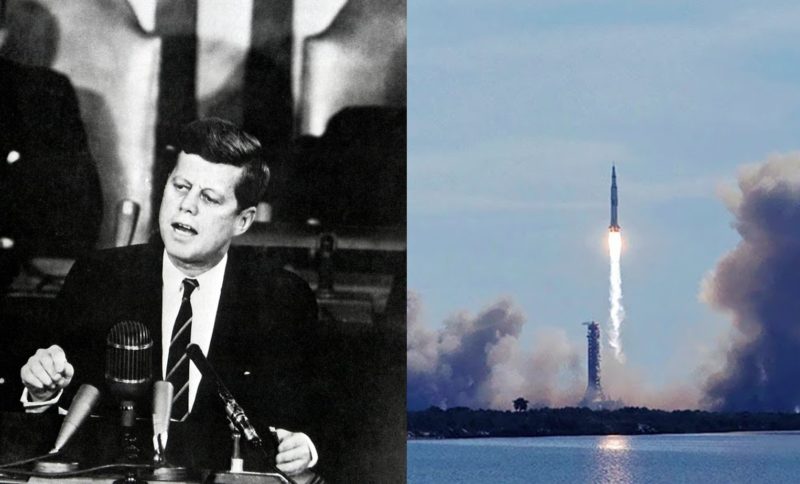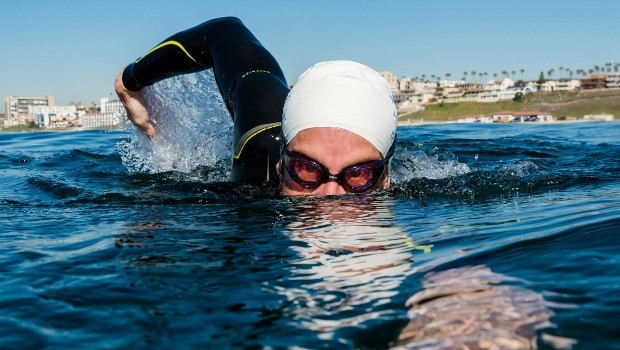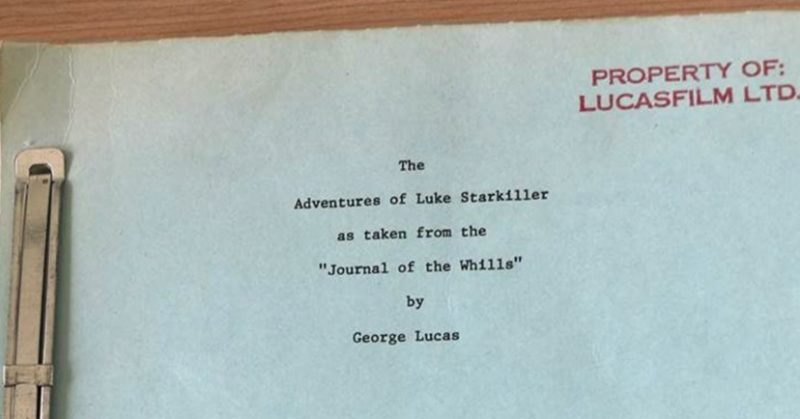6 Questions for Safi Bahcall: Marlon Brando and Popcorn; Lessons on Leadership; and the Idea that Changed the Course of History
1. What’s a Loonshot and how did you have this conceptual breakthrough?
The big ideas that have changed our world—the breakthroughs that have changed the course of science, business, and history—were rarely announced with blaring trumpets and red carpets. The most important ideas were often neglected and dismissed for decades, their champions written off as crazy. That’s why I call them loonshots.
A moonshot is a destination, a big exciting goal, like eliminating poverty or curing cancer. Nurturing loonshots is how we get there.
For example, when President John F. Kennedy announced to Congress in 1961 his goal of putting a man on the moon, he was widely applauded. Four decades earlier, though, when Robert Goddard described the principles that might get us to the moon—jet propulsion and rocket flight—he’d been widely ridiculed. The New York Times wrote that Goddard “seems to lack the knowledge ladled out daily in high schools,” namely that of Newton’s law on action and reaction, which made rocket flight in space impossible. (The day after the successful launch of the Apollo 11 rocket to the moon, 14 years after Goddard’s death, the paper announced that rockets did not in fact violate the laws of physics and that “the Times regrets the error.”)
Kennedy’s speech marked the original moonshot. Goddard’s idea was a classic loonshot.

2. Nobel Prize winner Daniel Kahneman says your book “can’t be missed by anyone who wants to understand how ideas change the world”. What’s your favorite example of an idea changing the world?
Let’s step back from recent history examples like jet propulsion (which made international travel available to the masses) or a switching device based on strange properties of semiconductor junctions (the transistor) and think longer term.
What was the one idea that changed the course of the human species more than any other?
To answer that, you need to travel back not just a decade or even a century – but thousands of years. If you were gathering food in a forest and lightning struck: how would you explain it? If you lived in a small village and a nearby volcano erupted, or you felt an earthquake, or you saw an eclipse, or your crops were destroyed by drought: how would you explain it?
For most of human history, tribal leaders or religious authorities or great-man philosophers would tell you why. Authority would explain reality.

In Western Europe, in the 17th century plus or minus a few years, a new idea emerged: underlying everything we see are universal truths and those truths can be determined through measurement and experiment. In other words, there are laws of nature and anyone can discover them.
That idea didn’t just suddenly appear. The story of that idea is an incredible 2,000-year, multi-cultural journey of Catholic bishops hiring Jews in Toledo to translate Arab critiques of Greek texts into Latin for Germans to read, of imported Chinese technologies and Indian mathematics and Islamic astronomy, of philosophers and popes, of eyeglasses and magnets and clocks and blood. That journey culminated in a revolution.
The idea that truth could be revealed to anyone was radical. Subversive. Its champions were often dismissed as unhinged. That idea, now known by its more modern name, the scientific method, is arguably the mother of all loonshots.
The rise and explosive spread of the scientific method across Western Europe, and the revolution in the tools of industry it enabled, sparked a pace and scale of change unlike any other in human history.
For the preceding two thousand years, life expectancy had barely changed. Since then, it’s doubled. Human population had been growing at less than 0.1 percent per year for those two preceding millennia; by the mid-twentieth century it was growing at 20 times that rate. And despite the population explosion, the world’s average economic output per person has increased by a thousand percent over the past two centuries.
In other words, the story of this loonshot is the story of the idea that changed the world more than any other idea in human history.
3. You graduated with highest honors from Harvard. PhD in Physics from Stanford. A star at Mckinsey. What’s your secret to learning?
I honestly don’t think it’s that hard to do well academically if you work hard and adopt what you might call a curiosity mindset. I love being curious. Which means that whenever I feel myself getting uncurious—for whatever reason—I know it’s time to make a change. I take myself out of a comfort zone and put myself in a situation where I’m at the beginning of a learning curve. It’s uncomfortable at first, but there’s a joy in that discomfort. It means rapid growth is coming—which is not only a great joy, but also a great privilege and gift. Why? Because we so rarely have the opportunity to learn from the beginning as we get older: we settle into one way of thinking, or one way of living, and rarely push ourselves—or get pushed—out of a comfort zone.
How I spend my time, for example, has changed dramatically every five or so years. I began in one area of theoretical physics (particle physics), and that’s all I knew. Then mid-way through my PhD I got a bit bored and made a sharp right turn into a field I knew nothing about (condensed matter physics). Then I swerved and made another sharp turn into the business world (management consulting). After a few years, when the pace of learning slowed, I jumped again into a new world: launching a startup, raising money, hiring and building a team, learning about a new industry and new fields of science (biology, chemistry, drug discovery). The transition from private to public was another jump. Finally: I abandoned all that and made yet another turn into something I knew nothing about: writing!
If there’s any secret it’s in wallowing in the joy of learning—relishing the discomfort of not knowing anything about a new area, and diving in full speed. Anticipating that joy keeps you searching for new questions and ideas.
4. You were the CEO of the biotech company Synta and set out to cure cancer. What’s a lesson you learned from your entrepreneur days that you want widely spread?
I think every first-time entrepreneur makes a ton of mistakes, and I was no exception. I was lucky enough to be surrounded by good people who helped me out. And I was eager to understand my mistakes and find ways to improve. I suppose that’s part of a curiosity mindset.
Probably one of the most important things I learned early on—the hard way—was leading not just from the head, but from the heart.
I came from a scientific, technical background, and my style of thinking and debating and persuading had always been logic driven. That style can work fine with some people (usually those who shared my background) but not with most people. Most people and most teams are relationship driven.
That’s because effective teams are built not only on skill but on trust, and trust comes from strong relationships: from understanding and caring about each other’s hopes and aspirations and fears.
Early on I read a line from a speech by I think it was Marine General Anthony Zinni that stuck with me: “You’ve got to love them to lead them.”
5. You are a scientist. And you write beautifully. Any specific process or methodology for writing this way?
Thanks – I would say anything good there has been less about learning and more about unlearning! By which I mean shedding the bad habits of an academic writing style.
It reminds me of swimming. A few years ago, for no good reason, I took up triathlon. Practically anybody can run or ride a bike, but swimming long distances in open water, unlike splashing around in a lap pool, requires technique. Years indoors thinking that you’re swimming ingrains horrible habits: keeping your head high, kicking for balance, swimming with your arms rather than your core, and so on. To swim long distances, I studied some swim-technique videos closely and eventually got an instructor to walk me through the basics of good swim form. Both helped me break down my old stroke and replace it with a new one, bit by bit, from scratch. And it worked! It was enormously fun to go from nothing to something—to go from breathing hard after a few laps in a pool to zooming a mile or two in open water with no effort. It’s the joy of climbing rapidly up the learning curve.

In the case of writing, the first step was to develop an ear: an ability to hear rhythm and cadence and the feeling that words evoke, beyond just their content. I should start by saying I have close to zero background in literature (I was a science geek). So I developed a bit of a strange process.
Every night, for a year, after dinner, I would spend the entire evening on two or three paragraphs of some beautiful passage I had stumbled across. Why did the author put this word here and not there? Why did he choose this one rather than some other one with similar meaning? How does it sound if you rearrange the word order or replace certain words—why does it sound so much worse? Why does the author use passive voice when everyone says active is better? How does he create seamless transitions? How does he create a feeling effortless, flowing, coherence across the piece? Over time, the choices became clearer and I would hear music when reading: perfect harmony for great writing; clashing junk noise for weak writing.
I would get so excited when I stumbled across a perfect passage and its beautiful music: I would record it in Evernote, whip out my phone at dinner, and read that passage to whoever my poor dinner companion happened to be, pounding the table to the rhythm, pointing out the beauty and the choices—see how he did X here and not Y—that’s why it works! Silence. No one cared. But I enjoyed it.
That was a start. Next, I had to learn something you never do in academic writing or presenting: character portraits. That’s because books that describe ideas tend to be boring. Books that describe people and their struggles—through which an idea is revealed—tend to be much more interesting, and, for me, more fun, challenging, and satisfying to write. For that, again, I found a handful of authors who have done that wonderfully, and I would read and reread beautiful passages, deconstructing what they were doing, word by word, until I began to see patterns.
Those first two are about form, but form is nothing without substance. So I had to learn how to tell a story that never loses the reader.

There’s a great Marlon Brando line that I like, which I often kept in mind. Someone asked him what he thinks about when he’s acting, what he’s trying to achieve, or something like that, and he said: You imagine your audience sitting at a theater with a bag of popcorn on their laps feeding themselves. Your job as an actor is “to stop that movement of the popcorn to the mouth.”
I think it’s similar with writing. Your job as an author is to never give the reader an excuse to put the book down.
6. What was your favorite moment, koan or insight from writing your book?
One quote I keep up on my wall is from Nabokov: “I prefer the specific detail to the generalization, images to ideas, obscure facts to clear symbols, and the discovered wild fruit to the synthetic jam.”
Any time I was tempted to take the easy way out in writing, I thought of that—what I have here is synthetic jam. Don’t give up. Go hunting. Find the discovered wild fruit.
A second is a Post-It with the words “The Adventures of Luke Starkiller.” It was the title of an early George Lucas draft of Star Wars. The plot was incomprehensible, the dialog was terrible. Yet it evolved into one of the greatest movies of all time.
It reminds me to give myself a break. All writing sucks in the beginning. I forget which writer said it, but it’s true: “All first drafts are shit.” It gets better.

This #Loonshots Q+A with Sam Potolicchio can also be found here.

